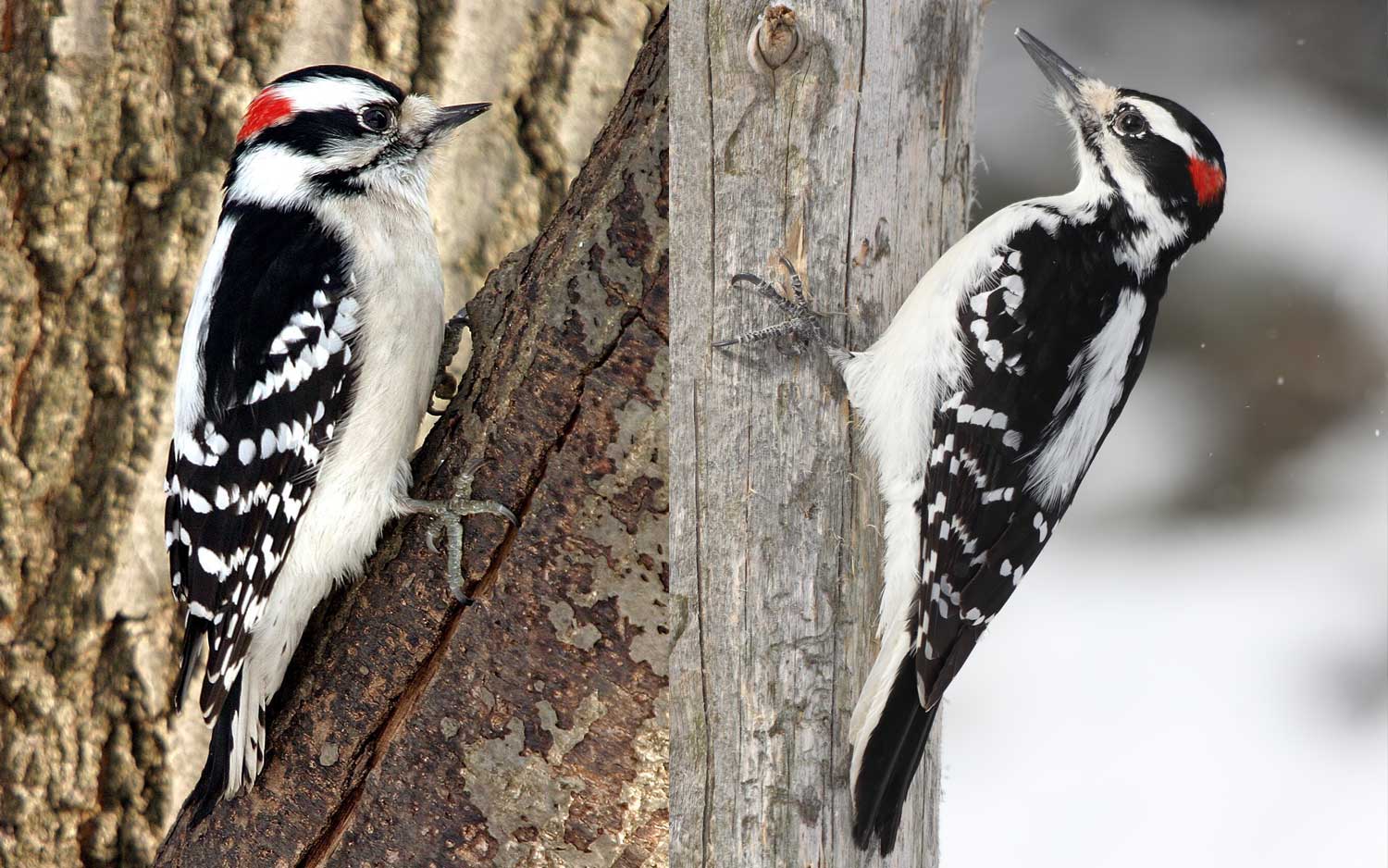What's the difference?: Downy woodpeckers vs. hairy woodpeckers

With their black-and-white plumages and the males' flash of red on their heads, downy woodpeckers and hairy woodpeckers can be especially difficult to distinguish from one another. Both are found in Will County and throughout Illinois and the United States, and both are common in backyards, drawn to suet feeders and even seed feeders, according to Project FeederWatch.
So, then, how can you tell which type of woodpecker is the one you spy out your window? If you can get a close look, you'll spot some tell-tale signs that distinguish the two species from one another.
First, hairy woodpeckers are bigger than downy woodpeckers. Hairy woodpeckers stand about 9.25 inches long and are similar in size to a robin, while downy woodpeckers only measure about 6.5 inches long, similar in size to a house sparrow. Hairy woodpeckers also have a longer bill, about as long as their heads, while downy woodpeckers' bills are short in comparison, only about a third of the length of its head, the Audubon Society reports.
The tail feathers can also serve as a key identification factor. The outer tail feathers on hairy woodpeckers are usually pure white, while downy woodpeckers typically have white tail feathers with black barring, giving the effect of being spotted, according to Project FeederWatch.
Where you see the bird may also be a clue. While hairy woodpeckers prefer tall trees and more forested area, downys often settle on younger trees or even cattails, the Audubon Society reports. And finally, downy woodpeckers are more prevalent, especially in suburban areas, than their hairy counterparts.
